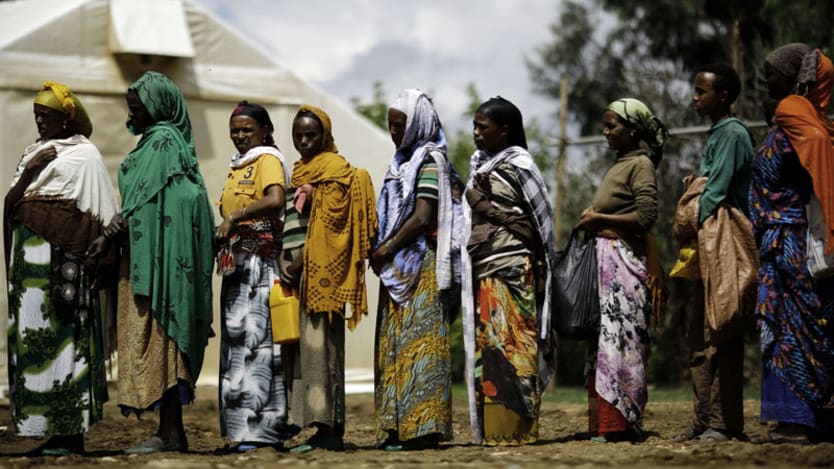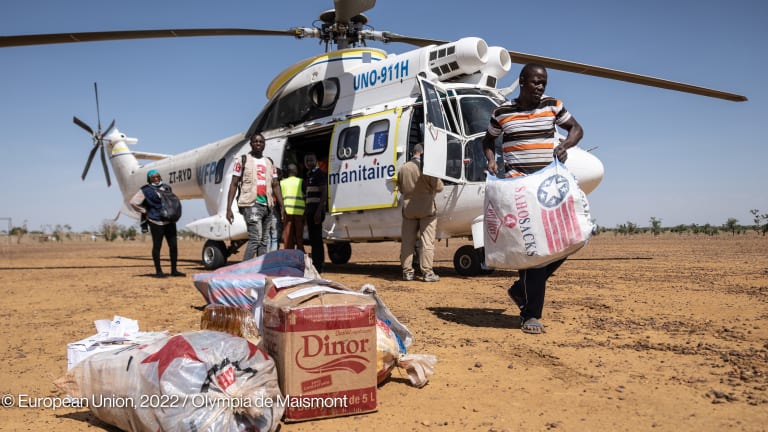
CANBERRA — Media plays an important role in bringing attention to the most devastating disasters around the world. But in the eyes of media, not all crises are created equal.
For the third year running, CARE has released its report on the 10 most underreported humanitarian crises of 2018. Released Thursday, it is an analysis of 1.1 million media sources in English, French, and German between Jan. 1-Nov. 28, 2018. The focus is on humanitarian crises where at least 1 million people were affected.
“Africa is something of a blind spot for international media despite the serious humanitarian needs there.”
— Stefan Knollmayer, emergency response manager, CARE AustraliaThose in Africa dominate the list. Ethiopia, Madagascar, the Democratic Republic of the Congo, Chad, Niger, Central African Republic, and Sudan all witnessed large populations killed, injured and displaced by famine, climate change, and violence during that time, but with limited media coverage.
Outside Africa, the impact of category five Typhoon Mangkhut on Luzon Island in the Philippines last September was overshadowed by other disasters in the region, although it killed 82 people, injured 130 and displaced more than a million, according to CARE.
But the Haiti food crisis — created by frequent natural disasters, poverty, and political instability — was identified as the most underreported humanitarian crisis in 2018. The report said it “barely received international coverage,” despite more than half the population facing a continuous threat of hunger and food insecurity and 22 percent of children deemed chronically malnourished, the report states. In total, 2.8 million people living in Haiti are in need of humanitarian assistance.
Missing from the list was last year’s most underreported humanitarian crisis — the hunger crisis in North Korea. In 2018, this was ranked 17th.
“Although still little is known about the country’s humanitarian situation, it may be that political developments in the region in 2018 led to some more coverage of the humanitarian situation,” Stefan Knollmayer, emergency response manager with CARE Australia, explained to Devex.
Regional trends in reporting
The report provides a global picture of media coverage. But by delving further into the data, Knollmayer said that regional differences could be seen.
“Eight of the 10 least reported crises are taking place in Africa, while six of the 10 most reported crises are taking place in or close to the Middle East, which includes Syria, Yemen, Afghanistan, Iraq, Turkey, and Lebanon. This definitely suggests Africa is something of a blind spot for international media despite the serious humanitarian needs there. Many of the African crises are protracted and complex — with both natural and human-caused elements — and we know that it is challenging to maintain interest in complex crises over long periods of time.”
Some of these crises — including those in DRC, Lake Chad Basin, and CAR — have appeared on CARE’s list repeatedly since it was launched three years ago.
“Unfortunately, hunger in Africa probably does seem like a story that the average Australian news consumer has heard many times before,” Knollmayer said. “Interestingly, while Ebola in West Africa was one of the biggest humanitarian stories of the past five years, its re-emergence in the Democratic Republic of Congo in 2018 received quite limited media coverage, although that has started to change in early 2019. This is an example of how a poor security situation can make it really hard to report on the other aspects of a multipronged crisis.”
To combat media fatigue of certain issues, Knollmayer said it is important to work better in collaboration with media to draw attention to countries and regions in need of urgent support.
There is also a link between the location of the media outlet and the crises they choose to cover. “For example, most articles about the food crisis in Niger were in the French media, with the two countries having historical and linguistic ties,” Knollmayer explained.
Encouraging better media coverage
Understanding the reasons behind a lack of media coverage on certain crises is important to breaking the cycle. “Tightening budgets are causing more and more news organizations to close foreign bureaus and making it harder to rationalize media trips,” Knollmayer said. “In addition, many countries with high humanitarian needs have restrictive visa conditions for journalists and can be unsafe to report from.”
But he said the changing nature of media can provide opportunities.
“Digital media is making it easier than ever to contact foreign sources and access information from far-flung places, so the tyranny of distance can be overcome.”
Aid agencies, including CARE, can facilitate these connections. But it also has to fit into what media outlets consider of interest to their audience. Working hand-in-hand may help encourage change.
“It’s important aid agencies and media organizations work together to keep these stories alive and fresh in public discourse because we know there is a direct link between public awareness and humanitarian funding, and people’s suffering remains just as important no matter how many times hunger has hit before,” Knollmayer said.
“There’s no magic solution to this, but it no doubt requires storytelling that combines human stories with authoritative facts, and harsh realities with examples of hope and resilience.”








